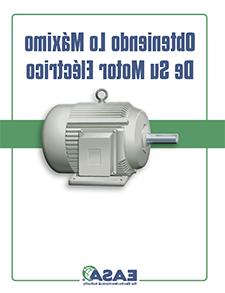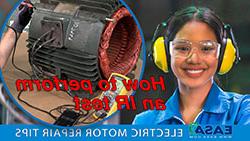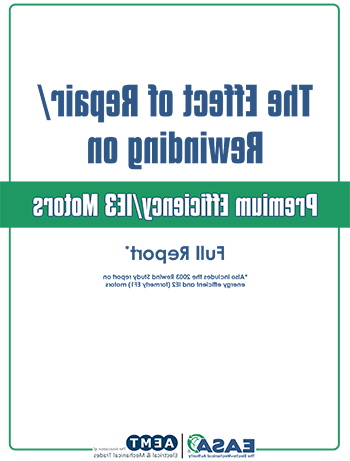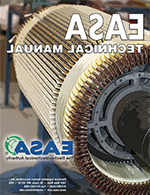Resource Library
Brush Stagger to Optimize Brush Life Through Current Density
When working with DC machines, it’s not uncommon to find a customer who runs different products requiring a range of armature current. Unlike other conductors, where lower current is a good thing, carbon brushes are designed for a narrow range of current density. A unique aspect of carbon brush life is that brushes operating at a much lower current density than they are designed for do not last nearly as long as expected.
The History and Evolution of AR100
Being proactive on behalf of the repair industry, EASA created the best practice repair standard for the industry. This article looks back on this history of this important document.
Controlled Environments and Cleanrooms for Service Centers
This presentation explores the distinction between a controlled environment and a cleanroom, the requirements for both, and provides details to help you determine if you want to add a controlled environment or a cleanroom to your facility.
Getting the Most From the Phase Balance Test
The phase balance test is a simple yet effective method for diagnosing some problems with existing windings and for inspecting new windings before resin treatment. Including thermography enhances diagnostic capabilities, making it a valuable addition to the testing process.
Submersible Pump Stator Oil Guidelines
In addition to seal oil, some submersibles have an oil filled stator cavity. The oil in the stator cavity very efficiently transfers heat from the stator winding and core, and especially from the rotor, to the pump casing where convection carries it to the pumpage in which the pump is submerged. While the specifications for seal oil are fairly flexible, stator cavity oil has more constraints.
Enhancing Efficiency in an Electric Motor Workshop: An Unconventional Approach
The Power of Data: Using Step Counters to Optimize Layout
Have you ever thought about using a step counter on your employees in a test setting? This idea can provide valuable data to help you understand how much movement your workers must perform daily due to the current workshop layout. By analyzing this data, you can identify inefficiencies in the layout that may not be immediately obvious.
Identifying Unmarked Leads of Three-Phase Motors
This presentation reviews procedures that explain how to identify unmarked leads of three-phase motors with one or two windings.
Installing and Removing Pulleys
This article looks at the installation and removal of quick detachable (QD) and taper lock pulleys.
Optimizing Asset Performance: The Critical Role of Electrical Signature Analysis in Asset Health Assessment for Electric Motor Systems
Pumps, compressors, fans and other types of mechanical movement are crucial to our industrial activities. Consequently, the health of these motors directly influences the operational reliability and longevity of the broader industrial ecosystem. Acknowledging this underscores the necessity for performing online health assessments of electric motors.
Pump Close Tolerance Fits
This presentation focusses on critical close fit tolerances and certain surface finish specifications.
Getting The Most From Your Electric Motors

 This 40-page booklet provides great advice for obtaining the longest, most efficient and cost-effective operation from general and definite purpose electric motors.
This 40-page booklet provides great advice for obtaining the longest, most efficient and cost-effective operation from general and definite purpose electric motors.
This booklet covers topics such as:
- Installation, startup and baseline information
- Operational monitoring and maintenance
- Motor and baseline installation data
- How to read a motor nameplate
- Motor storage recommendations
LEARN MORE AND DOWNLOAD MÁS INFORMACIÓN Y DESCARGAR BUY PRINTED COPIES
ANSI/EASA AR100-2020

Recommended Practice for the Repair of Rotating Electrical Apparatus
This is a must-have guide to the repair of rotating electrical machines. Its purpose is to establish recommended practices in each step of the rotating electrical apparatus rewinding and rebuilding processes.
DESCARGAR - ESPAÑOL

 Having trouble finding time for training? Check out the how-to videos in EASA’s new series Electric Motor Repair Tips.
Having trouble finding time for training? Check out the how-to videos in EASA’s new series Electric Motor Repair Tips.




